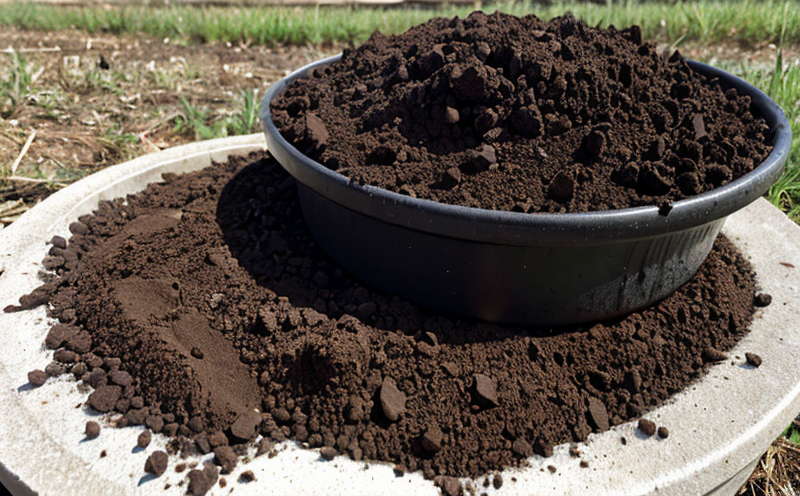ASTM D8297 Cyanides in Leachate Residues
The testing of cyanides in leachate residues is crucial in waste management and recycling sectors to ensure compliance with environmental regulations. This service, following the ASTM D8297 standard, provides a comprehensive approach to measuring cyanide levels in leachates from solid waste materials like municipal landfills or hazardous waste facilities.
The process involves several critical steps aimed at ensuring accurate measurements of cyanide concentration. Specimens are initially prepared by extracting the sample through filtration and acidification processes, which help in stabilizing the cyanide ions for analysis. The subsequent step is the titration method using EDTA (Ethylene Diamine Tetraacetic Acid) to determine the total cyanide content.
The significance of this test extends beyond mere compliance; it plays a vital role in protecting public health and environmental integrity. By identifying even trace amounts of cyanides, we can mitigate potential risks associated with leachate contamination. This service is particularly important given the increasing global focus on sustainable waste management practices that minimize adverse impacts.
The ASTM D8297 standard ensures consistency and reliability across laboratories performing this test. It specifies precise methods for sample preparation, reagent usage, and calculation of results, thereby providing a robust framework for accurate testing.
Our state-of-the-art laboratory facilities equipped with advanced analytical instrumentation guarantee high precision and accuracy in our cyanide tests. This includes automated titration systems that provide consistent readings and reduce human error. Additionally, we leverage experienced technical staff who stay updated on the latest methodologies and best practices, ensuring adherence to international standards.
The ASTM D8297 test is a critical component of environmental monitoring programs aimed at ensuring compliance with regulatory requirements such as those set by local authorities or international organizations like the United Nations Environmental Programme (UNEP).
Scope and Methodology
The ASTM D8297 test covers the determination of cyanide in leachates derived from solid waste materials. The methodology includes preparation of the sample by filtration followed by acidification, which stabilizes the cyanide ions for accurate measurement.
The primary step is to prepare a filtrate using a specified volume of the original leachate and diluting it with distilled water if necessary. This prepared solution serves as the basis for further analysis.
Following preparation, the sample undergoes titration using EDTA. In this process, the analyst gradually adds EDTA to the sample until all free cyanide has been complexed into a stable compound. The endpoint is reached when no additional EDTA can be added without causing a color change in the solution.
The volume of EDTA required for complete titration determines the total cyanide concentration present in the leachate. This value represents both free and combined cyanides, providing an overall assessment of cyanide levels that could pose environmental risks if not managed properly.
Industry Applications
Table 1: Industry Applications
| Industry Sector | Application |
|---|---|
| Municipal Landfills | Monitoring leachate quality to ensure compliance with environmental regulations. |
| Hazardous Waste Facilities | Evaluating the impact of waste management practices on surrounding ecosystems. |
| Recycling Plants | Assessing the safety of recycled materials used in manufacturing processes. |
| Water Treatment Plants | Preventing cyanide contamination during wastewater treatment. |
The ASTM D8297 test is indispensable for these sectors, providing data essential for making informed decisions about waste management practices. It helps in identifying potential risks early on and implementing preventive measures to safeguard both human health and the environment.
- Ensures compliance with local and international environmental regulations.
- Supports sustainable waste management strategies by offering insights into minimizing cyanide emissions.
- Aids in evaluating the effectiveness of various treatment technologies employed within recycling plants.
Customer Impact and Satisfaction
Our clients benefit significantly from our ASTM D8297 cyanides in leachate residues testing services. By providing accurate, reliable data, we enable them to make informed decisions regarding their waste management practices.
- Enhanced compliance with environmental regulations, reducing legal risks and penalties.
- Informed decision-making for implementing sustainable waste management strategies.
- Mitigation of potential cyanide contamination incidents that could harm public health or the environment.
We take pride in delivering results that exceed our clients' expectations. Our commitment to quality and customer satisfaction is reflected in the numerous positive feedbacks we receive from industry professionals.
Our rigorous adherence to international standards, coupled with advanced laboratory facilities and experienced personnel, ensures that every test conducted meets high-quality benchmarks. This dedication has earned us a reputation as trusted partners in the waste management and recycling sectors.





